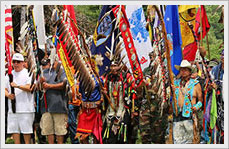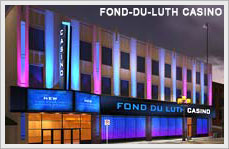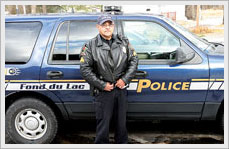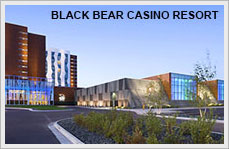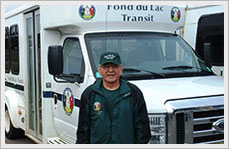Natural Resources - Sturgeon Restoration
Namewag (Lake Sturgeon-Acipenser fulvescens) is an important species for the Fond du Lac Band and the entire Great Lakes Region. After the construction of several hydroelectric facilities on the St. Louis River in the early 1900’s, the namewag population remaining in the “Upper St. Louis River” adjacent to the Fond du Lac Reservation was isolated from the lower estuary and Lake Superior. The remaining namewag were considered extirpated due to exploitation and pollution from the wood products industry and municipal waste. Interviews with elders indicate that namewag were still observed by anglers as late as the mid-1970’s, but numerous natural resource agency surveys after that time provided no evidence of namewag.
Stocking Efforts: The Fond du Lac Resource Management Division (FDLRMD) developed a cooperative arrangement with the Wisconsin DNR to obtain fertilized namewag eggs from the Menominee River. Fertilized eggs were collected from this source four times between 1998 and 2003. Fertilized eggs were placed between astroturf layers in nest boxes, and then placed in a section of rapids about 7.25 miles upstream of the confluence of the Cloquet River with the main stem of the St. Louis River.
In 2003, FDLRMD was advised to begin using a Lake Superior genetic strain for the source of eggs. An agreement between FDLRMD and Michigan DNR was made to obtain fry from the Sturgeon River, MI population. Adults were captured, and spawn collected, for three years (2004 – 2006) After VHS was discovered in Lake Superior in 2006, stocking efforts were put on hold. In 2013, stocking was revived due to research findings that namewag are not susceptible to nor can act as host to transmit VHS. To date, 242,000+ eggs and yolk-sac fry have been stocked in the Cloquet River along with 13,297 fingerlings ranging in size from 1-7 inches in length.
Recapture Assessments: FDLRMD along with USFWS Ashland FRO staff, began looking for juvenile namewag in 2000, 2001, and 2004. Using trap nets and trot lines, staff searched over a period of five weeks during each assessment. No namewag were sampled. Upon advice from USFWS, recapture efforts were suspended until significant additional stocking was completed.
In 2008, FDLRMD began receiving angler reports of namewag being caught. This prompted FDLRMD to begin serious attempts in 2010 to collect namewag, fit them with radio-transmitters, and use the tagged fish to identify where additional individuals could be located. Since 2010, FDLRMD has set over 547 gill nets and 95 trotlines throughout the upper St. Louis River.
Results: After 8 years of sampling a total of 27 namewag have been sampled with radio-transmitters being placed on 22 individuals. Genetic analysis of the sampled fish is conducted to identify the source population for each sampled fish. St. Louis River fish are analyzed at 12 loci, and compared to genetic data using the same 12 loci from other Lake Superior and Lake Michigan populations. St. Louis River fish were assign to their source population with the exception of one individual that had a unique genotype and may be a part of a remnant population.
Telemetry: Fish are located weekly during the brief potential spawning period, twice a month from June-October and once a month during the winter months. While the upper St. Louis River encompasses a 3600 mile2 watershed, with numerous tributaries and large rivers, the sturgeon captured thus far have small home ranges with relatively little seasonal movement.
Future Plans: FDLRMD has demonstrated that the upper St. Louis River can support a population of Lake Sturgeon. All cohorts stocked, with the exception of the last Sturgeon River stockings of 2004 and 2006, have been observed as sub-adults. What we lack are sufficient cohorts within the population. Annual stocking levels will increase while telemetry tracking and recapture efforts will continue annually. Additionally, increased effort will be expended to verify possible spawning activity.

